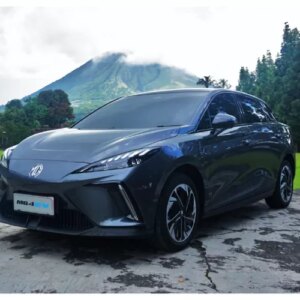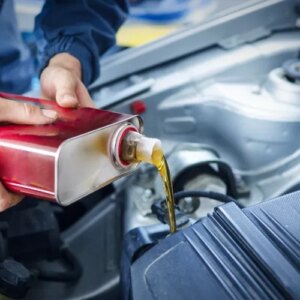[ad_1]
BONSERNEWS.com – Road conditions during heavy rains often cause puddles that are quite high and deep. Therefore, you must be careful if you don’t want to get aquaplaned.
Some time ago there was an accident on the Cipularang Toll Road KM 108. At that time, a Toyota Avanza was caught in an aquaplaning situation. This incident caused a stir on social media.
Furthermore, in the video circulating on social media, the Avanza can be seen driving in the left lane at high speed during heavy rain. Then, shortly after, the car spiraled out of control and resulted in it veering off the shoulder of the road.
Also Read: After Homecoming, Immediately Check This Car Part to the Workshop! Don’t Wait for it to Break
Then, many people wonder about aquaplaning. What’s that?
Aquaplaning or also known as hydroplaning is a condition when a vehicle loses traction or grip on a wet or slippery road surface due to water remaining on the road surface.
This occurs because the water between the vehicle tires and the road surface prevents the physical contact between the tires and the road, resulting in poor control of the vehicle.
Also Read: Back to Work But Still Thinking of a Holiday Mood? You Must Practice The Following Things
As a result, the vehicle may lose control and the ability to slow down or change direction quickly, causing an accident.
Aquaplaning conditions often occur when it rains heavily or the road surface is wet due to standing water.
This can be prevented by using good quality tires, maintaining vehicle speed according to road conditions, and reducing speed when crossing puddles.
In addition, there are several ways to prevent aquaplaning when driving on wet or slippery roads due to rain:
- Make sure the vehicle’s tires are in good condition, with sufficient depth to allow the water to drain properly.
- Check and make sure that the vehicle’s steering and brake systems are in good condition and ready for use.
- Maintain vehicle speed according to road conditions, especially during heavy rain.
- Avoid sudden maneuvers, such as speeding or braking hard.
- Avoid driving in flooded lanes or areas with lots of standing water.
- Avoid using tires with a thin profile, as this will make the tires lift more easily and will not hold water well.
- Avoid driving in the path of other vehicles that already look smoother, because there is a high probability that the surface will have deeper puddles.
By following the tips above, it is hoped that this will help reduce the possibility of aquaplaning when driving on wet or slippery roads. ()




